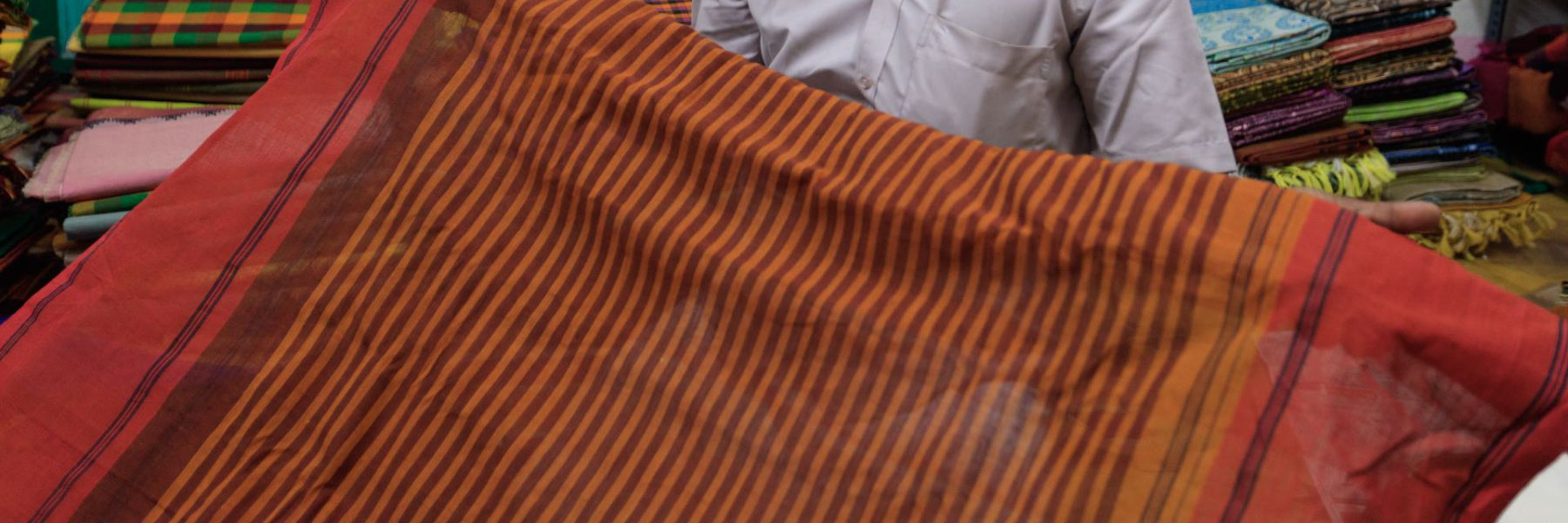
Sorry, we couldn't find anything that matches your search.
Destination

Hyderabad
Cité dynamique avec l’imposant...

Raipur
The stronghold of several erstwhile...

Ahmedabad
Déclarée première ville Indienne...
#
Pattachitra
A traditional art form, pattachitras are miniature paintings with religious themes. Stories from the Hindu epics and legends from the lives of Hindu gods and goddesses are painted on a specially treated fabric called patta. The word 'pattachitra' literally means a painted piece of cloth. With bright colours and intricate details, these paintings can be used as wall decor items. Practiced widely in Raghurajpur and Dandasahi villages, on the outskirts of Puri, these pattas have become synonymous to the place.
Another renowned handicraft of Odisha is sand carving. This involves carving a sculpture with just clean and fine-grained sand mixed with water. Attractive sculptures are carved out of sand by Odia artists.

Pipli
Noted for applique and patchwork, the village of Pipli is located about 40 km from Puri. Visitors can buy umbrellas, handbags, puppets, purses, wall hangings, bedspreads, cushion covers, pillow covers, lampshades, lanterns and more. The tarasas or heart-shaped wooden pieces made here are used in the chariots during festivities.
In fact, in the Chandan Yatra (sandalwood voyage), there are processions in which the deities are covered with chattris (cenotaphs) made of applique work. This applique work dates back to ancient times. It involves embroidering and stitching small pieces of cloth with depictions of flowers, animals, village scenes and other traditional designs on a larger cloth that forms the base. Cotton cloth is used for the base as well as for the patches. Different, vibrant colour combinations are conceptualised and then recreated by the talented village folk of Pipli. In order to reach this village, auto rickshaws are the only mode of transport. And whenever one is travelling to Pipli, one must keep a photo ID handy (it is a good idea to carry your Voter ID card) as there are two BSF check posts on the route.

Sarees
Odisha is home to several varieties of distinctive handwoven textiles, including cotton and silk sarees. The state is famous for its silk ikat sarees that are created by an age-old process in which the warp and weft yarns are tied and dyed to produce a distinct pattern while weaving. Taking inspiration from nature and temples, these sarees are bright in colour and feature bold patterns. Sambalpur, Berhampur, Mayurbhanj and Nuapatna are famous for producing tassar silk.
The rare silk fabric produced at Nuapatna is embellished with verses from the Gitagovinda and is used to adorn the idols at the Jagannath Temple. The masters are well versed with the centuries old art of silk worm cultivation and create silk ties, stoles, furnishings and dress materials, and sarees. The Berhampuri pata is a heavy silk saree with a narrow border and simple design. The Saktapar saree, from Sambalpur, is double ikat patterned with brocade border. The popular Bomkai cotton saree from the Ganjam district has strong influences of tribal art and temple architecture.

Raghurajpur
Located about 52 km away from Bhubaneswar, Raghurajpur is a heritage crafts village that is famous for pattachitra paintings. This art form can be dated back to the 5th century BC. In this, colourful patterns featuring mythological themes are painted on a piece of cloth. Visitors can also buy tussar paintings, palm leaf engravings, pottery, paper mache items, masks carved out of wood and stone, and cow dung and wooden toys. It is possibly the only place in India where there is such a large congregation of artists.
Raghurajpur is also well known for the Gotipua dance troupes, which is the precursor of the popular and globally appreciated Odissi classical dance. Guru Kelucharan Mohapatra, the doyen of Odissi classical dance, was also born in this village.







